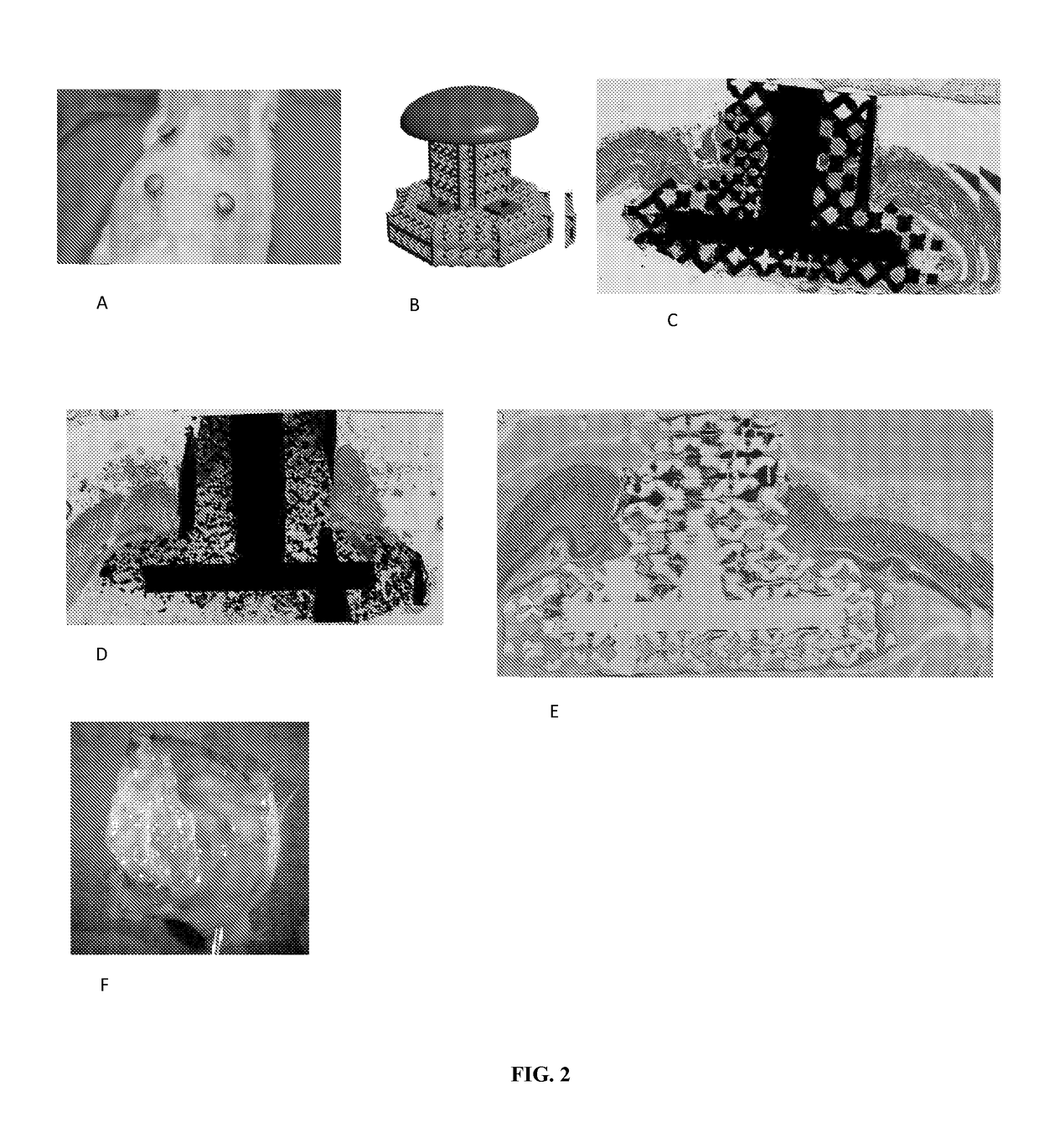Soft tissue in-growth of porous, three-dimensionally printed, transcutaneous implants of varying material and pore geometry
a technology of transcutaneous implants and porous tissue, applied in the direction of osteosynthesis devices, manufacturing tools, prosthesis, etc., can solve the problems of unclear mechanism of soft tissue in-growth, prone to infection, and inability to allow tissue growth of implants, etc., to facilitate the in-growth of subcutaneous soft tissue, promote the in-growth and attachment of fibrous tissue, and promote the in-growth of soft tissu
- Summary
- Abstract
- Description
- Claims
- Application Information
AI Technical Summary
Benefits of technology
Problems solved by technology
Method used
Image
Examples
example
[0019]In this Example, provided implants featured a vertical post with a solid core encased in a porous network. A hemispherical cap sat atop the post, while an octagonal base comprising a solid core surrounded by a porous network sat below the post. The octagonal base harbored four reinforced suture holes. The geometry of the porous network was either trabecular in nature (employing the proprietary geometry of Stryker Corporation), or a repeating dodecahedral configuration. The rhombic dodecahedral pores each comprised 12 open faces, 14 vertices and 24 edges. Diagonal lengths across each open face were 1.04 mm and 0.73 mm. Square profile struts with widths of 0.34 mm comprised the edge of each face. Each pore had an internal volume of 3.76 mm3. Individual rhombic dodecahedra were stacked via aligned faces to create a complete space filling, interconnected network. A representative computer rendered image of a dodecahedral porous implant is given in FIG. 1(a), with an individual rho...
PUM
| Property | Measurement | Unit |
|---|---|---|
| diameter | aaaaa | aaaaa |
| widths | aaaaa | aaaaa |
| internal volume | aaaaa | aaaaa |
Abstract
Description
Claims
Application Information
 Login to View More
Login to View More - R&D
- Intellectual Property
- Life Sciences
- Materials
- Tech Scout
- Unparalleled Data Quality
- Higher Quality Content
- 60% Fewer Hallucinations
Browse by: Latest US Patents, China's latest patents, Technical Efficacy Thesaurus, Application Domain, Technology Topic, Popular Technical Reports.
© 2025 PatSnap. All rights reserved.Legal|Privacy policy|Modern Slavery Act Transparency Statement|Sitemap|About US| Contact US: help@patsnap.com



